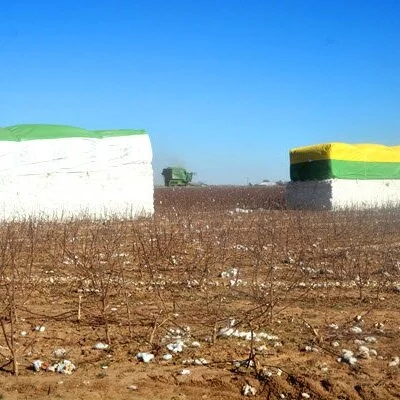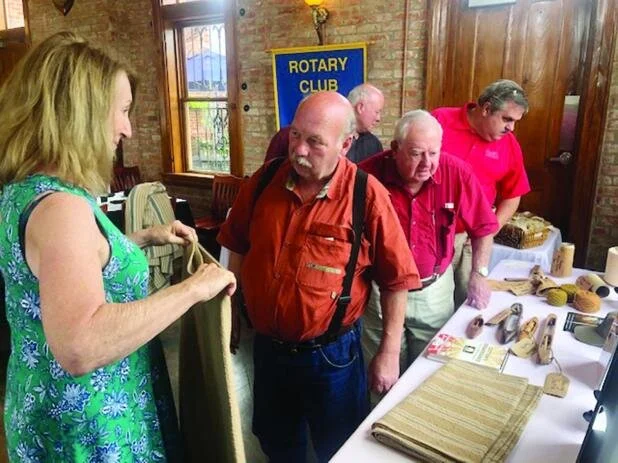Ashley Peters, Peters Crop Consulting, Crowville, Louisiana
“We will finish fertilizing the cotton this week. We just finished planting cotton 7 to 10 days ago (from June 16). Everything is planted, the oldest is at match head square and most of it is fertilized. It won’t be long until we start seeing blooms.
“Most of the earlier planted acres have been sprayed for thrips, but not every single acre has required treating. Populations varied farm by farm, but the later planted cotton seemed to miss the biggest thrips pressure.
“A few applications are also going out for plant bugs and some plant growth regulators on the older cotton that has been squaring for a week or two.
“In the cotton, we have done a pretty good job controlling the weeds. That isn’t exactly the case in soybeans or rice, but cotton acres got the typical burndown, the application at planting and have already had a post-herbicide shot.
“My acres are pretty stable compared to last year. Everyone I dealt with who had cotton last year still has some cotton this year, but I’ve talked to other consultants whose cotton acres are way down.
“Rice is a different story. We are still planting rice this week (as of June 16). Like the cotton, we have a wide range on our rice crop. It is anywhere from ready to flood to just trying to come up. Most of my rice is row rice this year, but I do still have a little traditional paddy rice. The oldest of my paddy rice is at or ready to be at permanent flood.
“In the row rice, we are cleaning it up with herbicide to start laying irrigation pipe. Overall, weed pressure is under control in the rice, but a few fields are traditionally an issue.
“I have some soybeans at R4, which are probably getting a fungicide application this week, but others are still getting planted. With a few exceptions, we are doing good on weed control. I’ve seen a few pests in random fields, but I haven’t seen any pests at treatment level yet. In the next 7 to 10 days, we will have a lot of beans moving into the R3 and R4 growth stages, and insect issues will likely start picking up then.
“Corn is in really good shape. Most of my growers got their intended acres planted in a timely manner, and it is all past tasseling. A few guys started irrigating in the past few weeks in the lighter soils, and some fungicide work is going out. Some applications are preventative and other growers are treating for a few disease signs popping up.
“Rain is in the forecast for this weekend from a developing tropical system (Claudette), so that will at least get some of our earliest planted corn on heavy ground very close to finishing out as far as irrigation goes. Most growers would welcome a good rain by that point.”
Sebe Brown, Louisiana Extension Field Crops Entomologist
“Things have quieted down in cotton. We hit 97 degrees today (June 15), the high is 97 again tomorrow, so we’re hovering right around 100 degrees. All these heat units are making the cotton start jumping especially if it has nitrogen under it.
“Thrips are still in the environment, but we’re growing out of the thrips susceptibility stage quickly. My colleague in the northeast part of the state still has higher thrips pressure, so some locations are still going to experience them. We have good cotton growing conditions right now to fight off thrips though. We have the heat units, so if you have the moisture, cotton is going to grow out of the susceptible stage.
“I haven’t had many calls regarding cotton aphids this year. We are definitely not seeing the blow up we saw last year. If we stay hot and dry like this, populations will start to increase. However, with the potential developing tropical depression hitting us at the end of the week, our dry spell may end. The radar does not indicate a defined part of Louisiana that could be affected (as of June 15).
“Some of the growers with the earliest planted cotton have started making applications for plant bugs especially in fields bordering corn. With the high price of corn, we have a lot of it across the state. From what I’m hearing, big populations of plant bugs are gathering in the cotton near corn.
“Our corn acres are moving along. Earlier planted corn is at brown silk with some even moving into dough. Some growers had a window in early March and planted a lot of acres of corn. We’re at the transition point where plant bugs are moving out of corn and into cotton particularly around field edges.
“Soybeans are pretty quiet right now. Around the state our beans range from R3 to cotyledon, and some places are still too wet to get them planted. Today was the last day to get maximum insurance payments, so I think a lot of guys were trying to make decisions on soybeans today.
“We saw an early flush of corn earworms in the vegetative stage beans, but those populations have been drawn into the corn as it’s at the ideal stage for corn earworm infestations. We also have more grain sorghum acres, so between the two, corn earworms are being sucked away from the soybeans. That means we are going to have a lot of susceptible beans and cotton at the opportune growth stage when the corn earworms come out of the corn and grain sorghum.
“It was easy to find worms in the corn I scouted today (June 15). It was not uncommon to find 2 to 3 worms per ear, so they’re in the environment.
“Sugarcane aphids are starting to show up in the earlier planted grain sorghum. Some applications are going today and will continue throughout the week (from June 15). The colonies are not hard to find in the area. It is especially easy to find sugarcane aphids in johnsongrass or grain sorghum near johnsongrass, which many of our grain sorghum acres are inundated with.”
Read More















